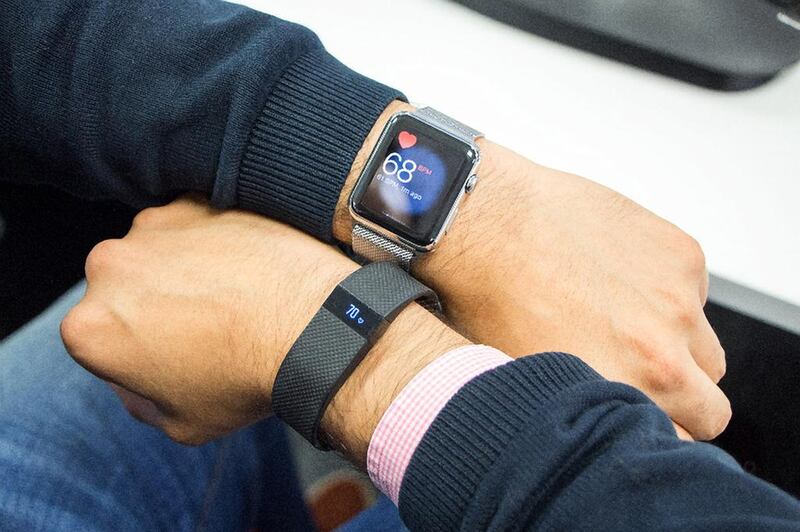Everybody loves a gold star or badge, as the Boy Scouts worked out a century ago. Then the gamers got in on the act. And now businesses are working out how to gamify systems and processes to enhance staff performance – and even employee well-being.
Rajat Paharia, author of Loyalty 3.0, says game designers have known how to use data to get players to perform better ever since 1972's Atari arcade videogame Pong.
However, gamification in the workplace has nothing to do with games, he says. “Gamification is about driving business objectives and motivating people through data,” explains Mr Paharia.
One popular form of gamification is in employee fitness programmes. Profusion, a UK data science company with a UAE unit, is working with employers and health insurance companies on projects using wearable fitness devices, and used its own staff as guinea pigs for an in-house experiment.
Half of its 65 employees signed up to have their steps, heart rate and sleep measured over 10 days using a Fitbit Charge HR, with surveys every few hours about their consumption, mood and stress levels, and no more incentive than curiosity.
The Profusion chief executive Mike Weston says that within the study, people’s behaviour changed simply because they were being monitored – with some stress levels rising significantly as heart rates were checked. Meanwhile, the more competitive members of the team started walking 30,000 steps on weekends.
“Some people respond well to competitive peer pressure, while others find it a disincentive and tune out,” Mr Weston says.
Still, he thinks, we will see these kinds of data-based wellness programmes take off. Profusion is in talks with the Dubai Smart City Initiative about how to leverage the data from fitness wearables ahead of Expo 2020, and Mr Weston says the recently launched Dubai Happiness Index is also a “significant opportunity”.
The company is also looking at beacons (location devices around the office to help track employee movements) to see where people gather. This could be useful for seeing where conversations take place and how much time people spend at their desks, in meetings and interacting with colleagues, he says.
But with any data-based project, he stresses the need for third-party companies to anonymise the data and act as a “damp proof course” to stop the leakage of personal information to an employer or insurance company.
q&a wearables not yet reliable
Suzanne Locke assesses the usefulness of analysing wearable device data in the workplace:
How accurate are wearable fitness devices?
In the Profusion in-house project, one employee who called in sick showed up on his Fitbit as having done 20,000 steps, although he was “adamant he was in bed”. Profusion’s data analysts came to the conclusion he had a fever and the device was calculating his shivering as steps. “The accuracy of these devices is somewhat open to question and certainly not perfect,” Mike Weston of Profusion says.
Which other companies are into gamification?
In the US, Target has gamified the checkout process for cashiers, who received a score based on an optimum time for each item they scan. Delta created a Ready, Set, Jet project to help train call centre employees – they claim the games helped them do four years’ worth of training in one year. Uber, Cisco, Microsoft, Deloitte and Salesforce are all also experimenting with such programmes.
What did the Profusion wearables tests show?
Measuring the heart rate of different emotions, Profusion found that a confident person had a heart rate of 68 beats per minute (bpm), whereas the heart rate of someone who was sad rose to 81 bpm and an anxious employee to 88 bpm. Meanwhile, in terms of sleep, those without children unsurprisingly got more sleep on average (6 hours 20 minutes for women, almost two hours more than for mothers).
business@thenational.ae
Follow The National's Business section on Twitter





